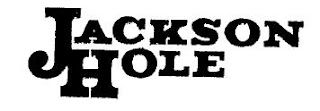In October 2020, the TTAB upheld failure-to-function refusals of the term .SUCKS in standard character and in stylized form (shown below), for domain registry services related to the gTLD in the proposed mark. [TTABlogged here]. Applicant Vox Populi appealed only the refusal of the stylized version of the mark, arguing that the stylization makes the proposed mark registrable. The court, however, found no error in the Board's conclusion that the stylized form of .SUCKS fails to create a commercial impression separate from the unregistrable term .SUCKS. In re Vox Populi Registry Ltd., Appeal No. 2021-1496 (Fed. Cir. February 2, 2022) [precedential (Opinion by Judge Timothy B. Dyk).

Vox Populi did not appeal from the Board's ruling that the standard character mark .SUCKS "will not be perceived as a source indicator," but instead "will be perceived merely as one of many gTLDs that are used in domain names." Vox did challenge the ruling regarding its "'retro,' pixelated font mark, The Board found that "the stylized lettering or design element in the mark does not create a separate commercial impression and is not sufficiently distinctive to 'carry' the overall mark into registrability."
The court noted that it has had "limited occasion" to address the failure-to-function issue. However, TTAB cases "provide helpful additional detail on source identifiers." The Board focuses on consumer perception and loos to the specimens of use and marketplace evidence to determine how a particular designation would be perceived by relevant consumers. Certain categories of proposed marks fail to function as source identifiers: e.g., informational messages or general information about the goods or services.
Although it did not appeal from the refusal of the standard character mark, Vox raised the issue of distinctiveness of .SUCKS in its opening brief. The court, however, found that substantial evidence supported the Board's finding that "consumers will view the standard character mark .SUCKS as only a non-source identifying part of a domain name, rather than as a mark."
The question, then, was whether the stylization of the stylized form rendered that mark registrable.The court observed that this issue requires a subjective determination "based on a viewer's first impression." The court cited several well known TTAB decisions as examples (stylized versions of CONSTRUCT-A-CLOSET (registrable), JACKSON HOLE (registrable), BUNDT (unregistrable), and SADORU (unregistrable), and then concluded that the Board did not err in ruling that the stylized form of .SUCKS fails to create a separate commercial impression.

![]()


The Board noted that in the stylized form of .SUCKS, "[a]ll of the characters in the applicant's mark are the same height and width and are merely displayed in a font style that was once mandated by the technological limitations of computer screens."(quoting the examining attorney).
And so, the CAFC affirmed the Board's decision. It noted that Vox did not make a claim of acquired distinctiveness, and the .SUCKS stylized version may be registrable "if it can be shown that the particular display which the applicant has adopted has acquired distinctiveness." Cordua, 823 F.3d at 606 (quoting Sadoru, 105 U.S.P.Q.2d (BL) at 1486).
Read comments and post your comment here.
TTABlogger comment: I think the stylized version is inherently distinctive and should be registrable with a disclaimer of .SUCKS. What do you think?
The content of this article is intended to provide a general guide to the subject matter. Specialist advice should be sought about your specific circumstances.

